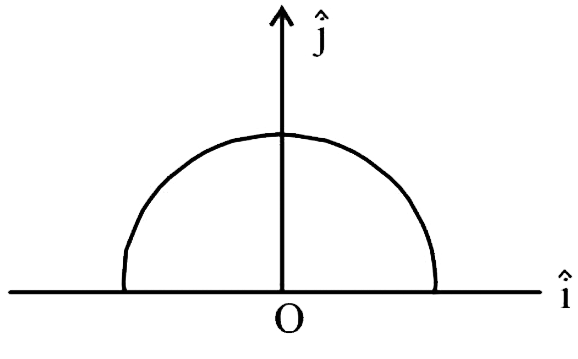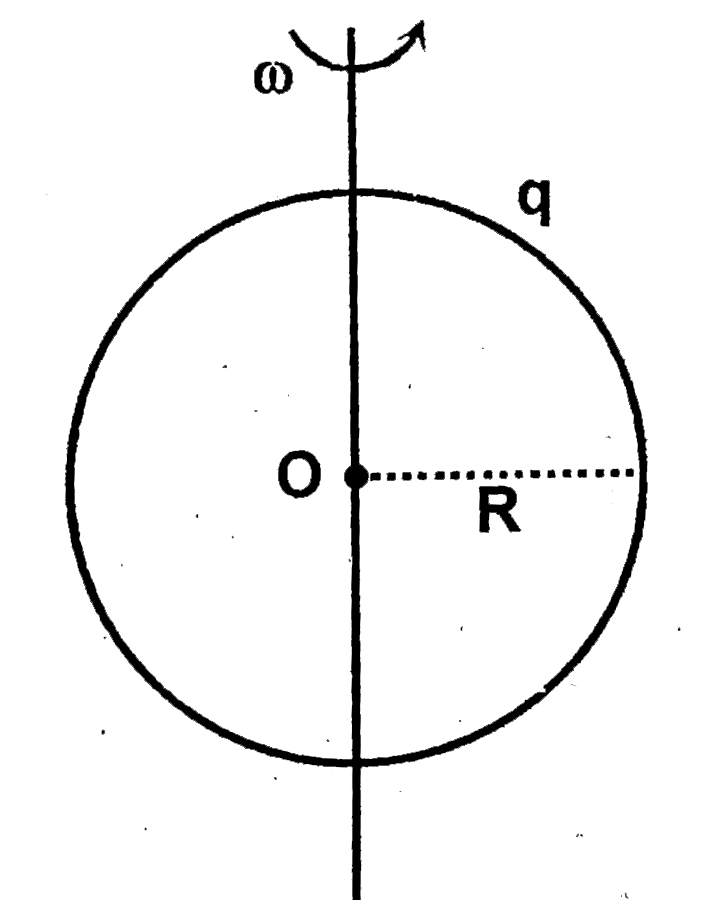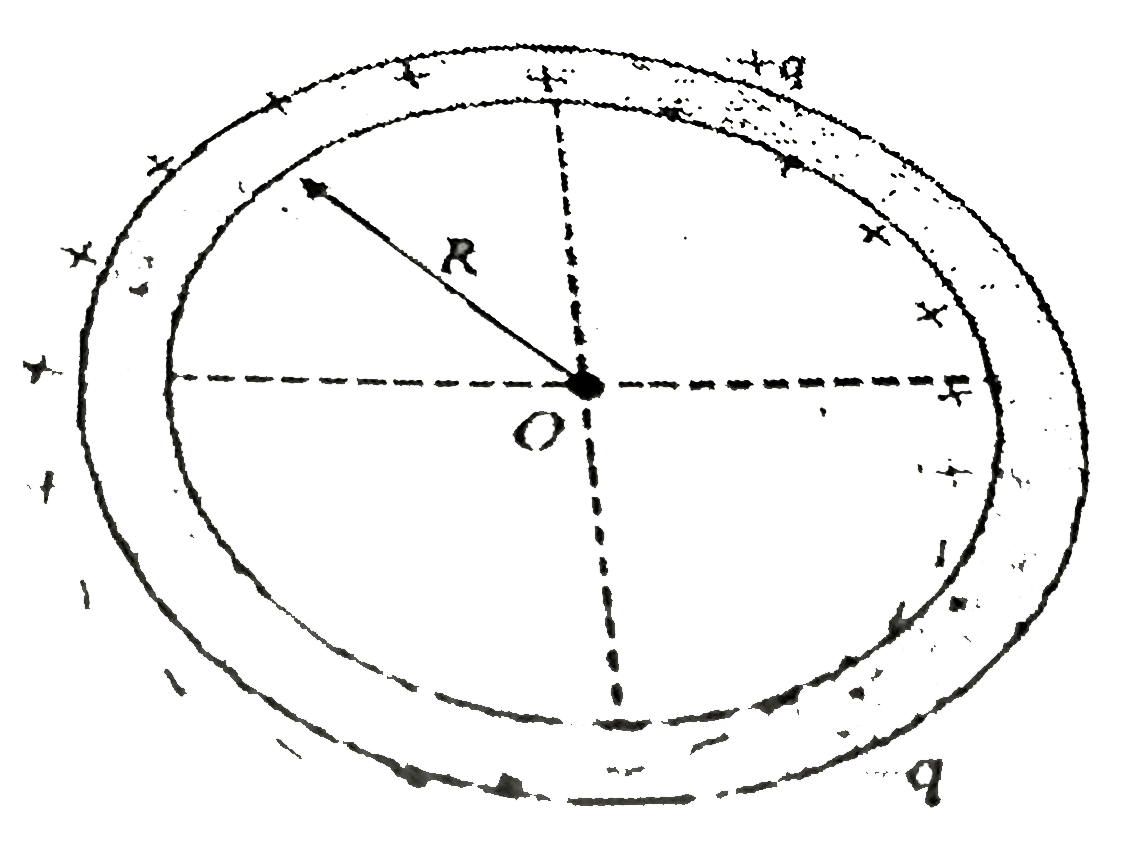A non-conducting ring of radius r has charge q distributed unevenly over it. What will be the equivalent current if it rotates with an angular velocity Ω?
To find the equivalent current produced by a non-conducting ring of radius r with charge q distributed unevenly over it, rotating with an angular velocity Ω, we can follow these steps:
Step 1: Understand the concept of current
Current (I) is defined as the amount of charge (Q) passing through a point in a circuit per unit time (T). Mathematically, it can be expressed as:
I=QT
Step 2: Determine the time period of rotation
The time period (T) for one complete rotation of the ring can be calculated using the angular velocity (Ω). The relationship between angular velocity and time period is given by:
T=2πΩ
Step 3: Substitute the time period into the current formula
Now, substituting the expression for T into the current formula, we have:
I=qT=q2πΩ=q⋅Ω2π
Step 4: Final expression for equivalent current
Thus, the equivalent current I for the rotating non-conducting ring is:
I=q⋅Ω2π
Summary
The equivalent current produced by the rotating non-conducting ring is given by:
I=q⋅Ω2π
Current (I) is defined as the amount of charge (Q) passing through a point in a circuit per unit time (T). Mathematically, it can be expressed as:
I=QT
The time period (T) for one complete rotation of the ring can be calculated using the angular velocity (Ω). The relationship between angular velocity and time period is given by:
T=2πΩ
Now, substituting the expression for T into the current formula, we have:
I=qT=q2πΩ=q⋅Ω2π
Thus, the equivalent current I for the rotating non-conducting ring is:
I=q⋅Ω2π
The equivalent current produced by the rotating non-conducting ring is given by:
I=q⋅Ω2π
Topper's Solved these Questions
- BOOK - PRADEEPCHAPTER - CURRENT ELECTRICITYEXERCISE - Conceptual Problems3videos
CURRENT ELECTRICITY
- BOOK - PRADEEPCHAPTER - CURRENT ELECTRICITYEXERCISE - Very short Q/A7videos
CURRENT ELECTRICITY
- BOOK - PRADEEPCHAPTER - COMMUNICATION SYSTEMSEXERCISE - MODEL TEST PAPER-29videos
COMMUNICATION SYSTEMS
- BOOK - PRADEEPCHAPTER - DUAL NATURE OF RADIATION AND MATTEREXERCISE - Exercise191videos
DUAL NATURE OF RADIATION AND MATTER
Similar Questions
Knowledge Check
- Question 1 - Select One or More
A conducting ring of radius R has charge Q distributed unevenly over it. If it rotates with an angular velocity ω, the equivalent current will be
AzeroBQωCQω2πDQω2πR - Question 2 - Select One
A thin semi-circular ring of radius r has a positive charge q distributed uniformly over it. The net field →E at the centre O is
 A(a) q4π2ε0r2ˆjB(b) −q4π2ε0r2ˆjC(c) −q2π2ε0r20ˆjD(d) q2π2ε0r2ˆj
A(a) q4π2ε0r2ˆjB(b) −q4π2ε0r2ˆjC(c) −q2π2ε0r20ˆjD(d) q2π2ε0r2ˆj - Question 3 - Select One
A non conducting disc of radius R, charge q is rotating about an axis passing through its centre and perpendicular to its plane with an angular velocity ω charge q is uniformly distributed over its surface. The magnetic moment of the disc is
A14qωR2B12qωRCqωRD12qωR2
consider a nonconducting ring of radius r and mass m which has a totoal chargej q distributed uniformly on it the ring is rotated about its axis with an angular speed ω. (a) Find the equivalent electric current in the ring (b) find the magnetic moment μ of the . (c) show thatμ=q2m where l is the angular momentum of the ring about its axis of rotation.
View SolutionA non-conducting thin disc of radius R charged uniformly over one side with surface density σ, rotates about its axis with an angular velocity ω. Find (a) the magnetic field induction at the centre of the disc (b) the magnetic moment of the disc.
View SolutionConsider a non conducting plate of radius a and mass m which has a charge q distributed uniformly over it, The plate is rotated about its own axis with a angular speed ω. Show that the magnetic moment M and the angular momentum L of the plate are related as ML=q2m.
View SolutionA hollow non conducting sphere of radius R has a positive charge q uniformly distributed on its surface. The sphere starts rotating with a constant angular velocity 'ω' about an axis passing through center of sphere, as shown in the figure. Then the net magnetic field at center of the sphere is
 View Solution
View SolutionA thin disc of radius R has charge Q distributed uniformly on its surface. The disc is rotated about one of its diametric axis with angular velocity ω. The magnetic moment of the arrangement is
View Solution



